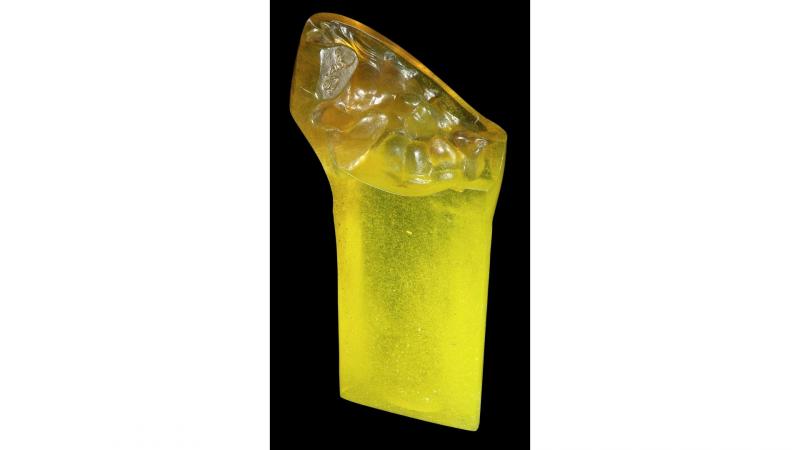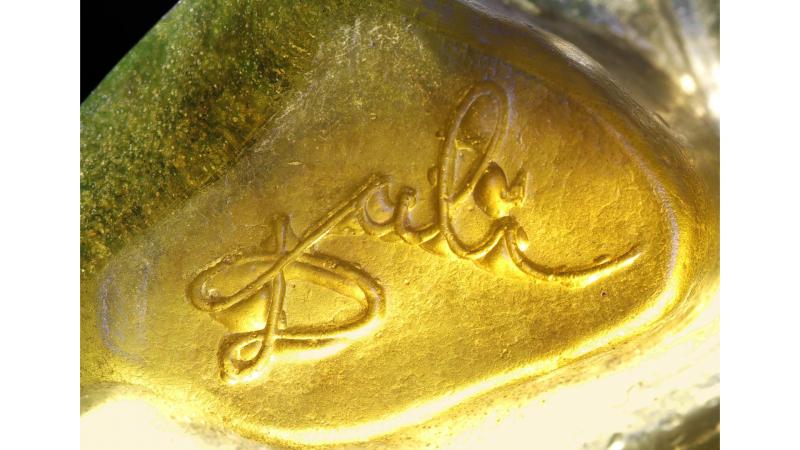Since the start of the century, during the Art Nouveau period, the brothers Auguste and Antonin Daum, who were the founders of the glassworks in Nancy, had already been producing glass-paste pieces, thanks to an artist who had mastered the material perfectly: Amalric Walter.
Jacques Daum, Auguste's grandson, has been managing the glassworks from 1965. With a great sense of openness, he took the risk of working with contemporary artists to revitalise glass production. He brought glass-paste work up-to-date with delicate nuances, by mixing it with crystal and thus creating a translucent glass that is dotted with innumerable bubbles.
Having been contacted by Daum, the famous painter and sculptor Salvador Dali was very quickly attracted by this new material, which allowed him to shape his imagination. In this work, which was created and crafted in 1972, we can see part of the stylised forearm, on top of which is the hand print of Dali's closed fingers. Of all the artists who collaborated with the Nancy factory, he was the one who created the greatest number of original pieces, best utilising the most varied colours and playing with the translucency and elasticity of the material, which allowed him to vary the density and thickness and, most importantly, bring light into his sculptures. Moulded inscriptions: the signature “Dali” and "Daum”, as well as “made in France” and “HS/150” (piece produced with 150 copies) are engraved. Engraved base: "gift from the Daum glassworks to the Curtius Museum in Liège, 1973”.
Numéro d'inventaire FLORA
GC.VER.08a.1973.61334 (73/69)

